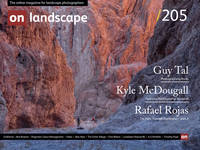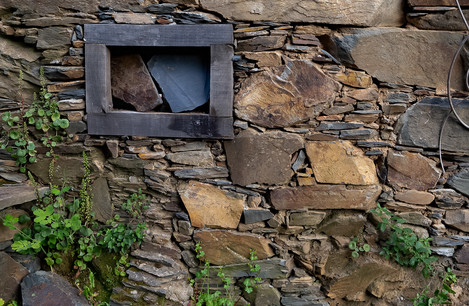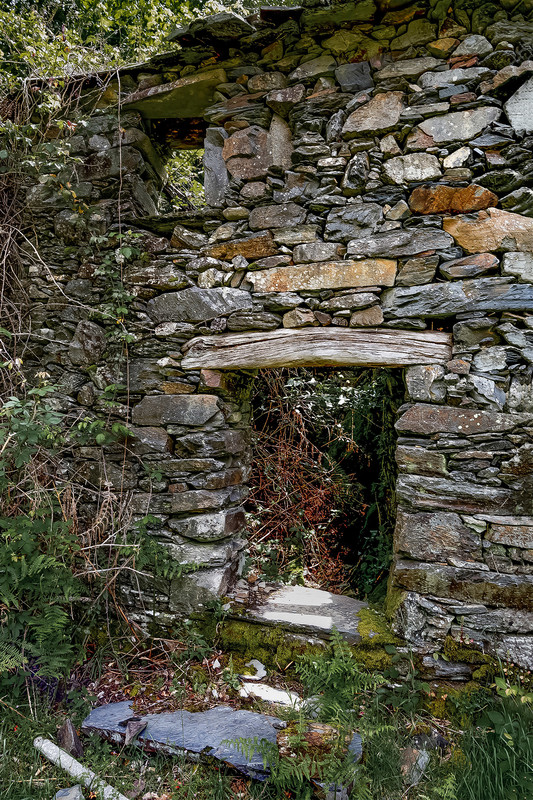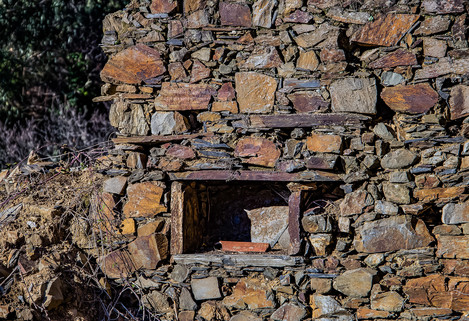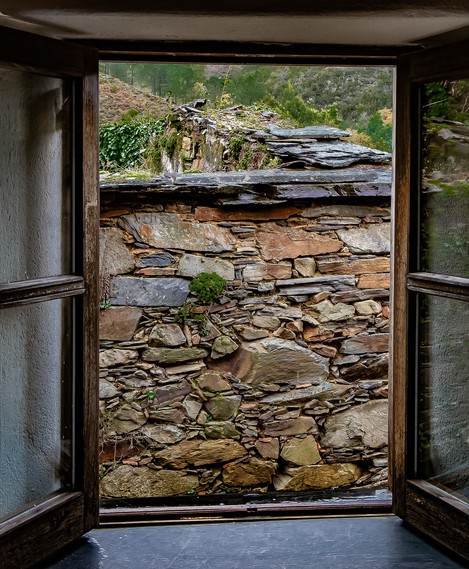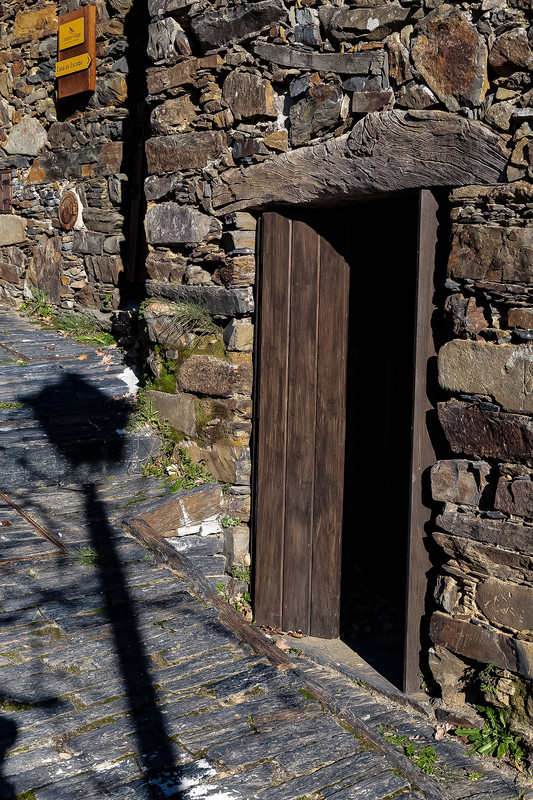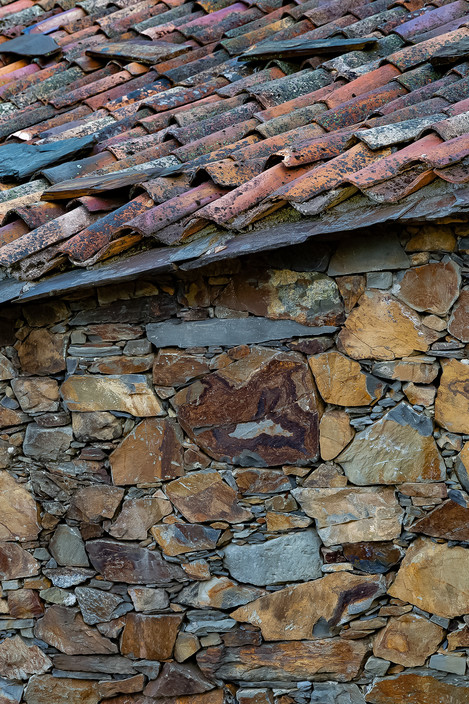Death and resurrection

Chris Wilson
I have been taking photographs for more than 50 years, but I have only been doing so on a serious basis since 2017; I still have a lot to learn. Most of the images I have made fall somewhere in the overlap of travel and landscape photography. However, I suspect that many aficionados in either genre would regard me with some scepticism. I never use a tripod, which is anathema to plenty of landscape photographers, and I never photograph people, which a true travel photographer would surely find suspicious.
The star of this story is a rock – schist – a hard, sometimes beautiful, rock that has greatly influenced the lives of the people who live on it and who exploit it to create fascinating buildings.
It has always been my belief that the landscape is not just something beautiful and fascinating to look at; it is also a major shaper of human activity at multiple levels, and is in its turn moulded by the decisions and actions of people. In fact, the landscape we see today in much of the world, certainly in most of Europe, is the outcome of the interwoven stories of nature and the human exploitation of the environment. In this sense, our appreciation of a landscape is enhanced by some awareness of how it got to look this way. Landscape photography and environmental awareness are natural companions.
This article and the accompanying portfolio try to examine some of these connections for just one place – a small village, a hamlet we’d call it in Britain, in Central Portugal called Cerdeira that was completely abandoned before restoration efforts began about 30 years ago.
The images
The photographs here can be thought of as my tribute to the schist. The character of the rock defines the region and I made three brief visits (2 to 5 days each) in 2018 – January, May and December. I had chance to see the buildings and ruins of Cerdeira in many moods, from the almost absurdly golden light just before a winter sunset to a summer thunderstorm. What kept attracting me was the rock itself. There is an irregular, almost mosaic, character to the walls of the buildings. The highly diverse beauty of the stonework contrasts with the more regular geometry of the tile roofs, though even up there, slabs of schist are left on top of the tiles, as the traditional methods of roofing are flimsy and the blocks provide extra stability.
I would describe the resulting images as highly detailed semi-abstracts. Like millions before me, I feel that the essence of each photograph goes back to Ansel Adams’s concept of “visualisation”. As he put it, this involves seeing a photograph “in your mind’s eye”, knowing the finished image you wish to create, and then taking the steps needed to make the photograph that corresponds to this internal image. In an interview late in his life, he was very clear: “The picture has to be there, clearly and decisively.”
In practical terms, I also follow Guy Tal’s advice, as expressed in his book The Landscape Photographer’s Guide to Photoshop, i.e. I do not try to create the image that corresponds to my visualisation in the field, but rather I take a photograph that will enable me to reproduce that inner vision once I work on it on my laptop. I use Photoshop, but in fact, I find that my visualisations can be found using just a few of its features. Most of the editing goes no further than the tools available in Camera Raw, along with selected dodging and burning. Of course, processing was also a feature of Adams’s methods, so the approach goes back almost a century, even if today we use software when Adams relied on chemicals and length of exposure. The key element for me in the field is the composition; that is the essence of my visualisation. I should also note that these photographs, like all I make, are handheld. I have never been able to work comfortably with a tripod. In the past, this meant accepting that much of landscape photography was beyond my grasp. However, with modern sensors and stabilized lenses, the extra stability of a tripod is no longer needed for a much wider range of images.
The idea that an artist is someone who looks at the same world but sees it differently is a cliché of such long-standing that I have never been able to identify an initial author, and there is at least tentative evidence from cognitive science to support the contention.
The rock and its impact
In traditional, pre-industrial societies locally available resources are critical; the nature of the bedrock determines what building material is available. Schist is hard, created when softer sedimentary rocks were squeezed and baked, deep in the earth hundreds of millions of years ago when continents collided. Hard and impermeable, schist splits easily along the grain of the rock, but it cannot readily be cut into regular blocks. So, buildings traditionally were assembled from irregular-shaped pieces. With the ingredients needed for mortar hard to come by locally, the walls were largely made of solid uncemented stone, pieced together like a three-dimensional jigsaw or mosaic and mortar limited to filling in holes. Schist also varies greatly in colour, both from quarry to quarry and over time as it weathers. Freshly cut, it is often blue or purple, but can also be yellow or orange, and it weathers to a great variety of shades and textures. In the humid climate of Portugal, the stone also acquires a patina of lichens, further enriching the palette of colours. The result, to my eyes, is one of the most diverse and beautiful building materials to be found anywhere, and the specialist builders who now reconstruct the old houses have an eye for this beauty that leads me to think of them as artists rather than artisans. But the rock has an impact that goes far beyond house-building.
Obdurate schist resists erosion and makes hills and mountains with poor soil and steep slopes. In Portugal people have lived in these regions for thousands of years – they were already long-established when the Romans arrived over 2,000 years ago. But these hills have always been tough, marginal places to live in compared with the more fertile lowlands. When opportunity arose to move to towns and cities, or even abroad, people did so, especially after World War Two. Gradually the schist hills began to empty and by the 1970s Cerdeira was a ghost village, its houses abandoned and crumbling, its farm terraces, created with so much effort on the rugged slopes, returning to nature. Rural depopulation of this kind is a widespread phenomenon; across whole swathes of Southern and Eastern Europe farms, villages, even small towns are emptying.
Visiting these abandoned villages, or ones where a handful of residents still linger, is a poignant experience. These are places where people have struggled to make a living for hundreds, even thousands, of years, often in unforgiving conditions. Now they are neglected and decaying. Centuries of effort left to fall into ruins - especially saddening in places where the traditional buildings are often so beautiful. Walking through Cerdeira on the single, carefully graded, schist footpath that connects the rebuilt houses reveals scene after scene that speaks of decay. A doorway that once was the way into someone’s home, now just leads to a tangle of brambles and weeds. A wall, with a niche in the stonework that once might have held an oil lamp or a candle, is falling apart on an almost daily basis. A door ajar, facing one of the reconstructed houses, only opens to reveal heaps of rubble and a roofless, collapsing interior. In many deserted villages it feels impossible to imagine anything other than gradual decay and disappearance. But the schist has one final, and optimistic, role to play.
After so long making life difficult, in the era of ecotourism and sustainable development, the rock has given the communities that live on it a new identity – the Schist Villages. Some two dozen communities have come together to work collectively to establish themselves as a destination for “green tourism” with an emphasis on traditional design, access to nature, and high-quality local produce. In Cerdeira, after decades totally abandoned, it is not fanciful to speak of resurrection. Guided by the creative instincts of ceramicist Kerstin Thomas, the village has become a lively focus for the arts as well as a tourist centre. The photographs here try to give some hint of this transformation.

